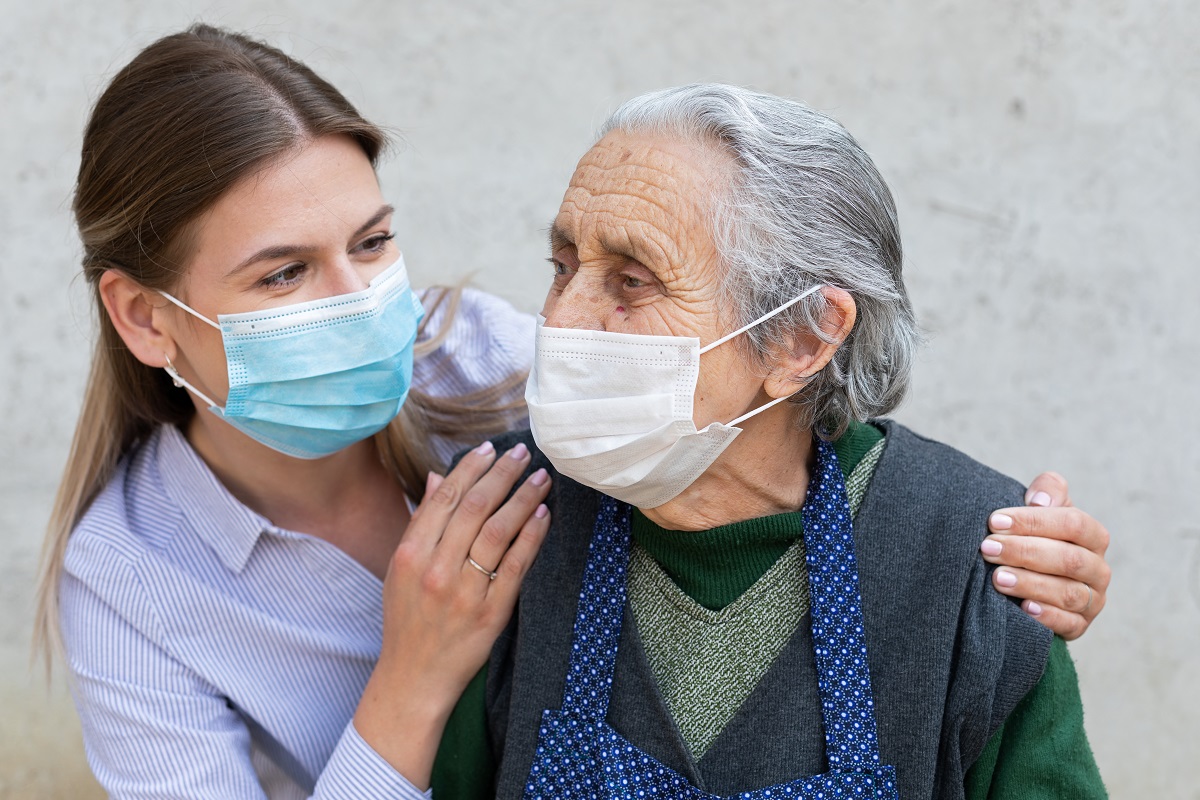Soaring summers and bitingly cold winters, the UK sees them both. For many of us, responding to these changes in temperature is something we take for granted. But, for those living with dementia, it can be a considerable challenge. Something as seemingly simple as wanting to take off a jumper or close a window, can be both hard to do and communicate to others.
As we age, we all become more susceptible and sensitive to fluctuations in heat. Many factors contribute to this, including slower metabolic rates, less fat to insulate our bodies, thinner skin and blood vessels, slower circulation and lower levels of activity. What’s more, many people prescribed a combination of certain medications can find that they have more difficulty regulating heat than others.
But for those living with dementia and Alzheimer’s, on top of these factors, there are even more reasons to keep an eye on hot and cold weather.
Do changes in temperature make dementia symptoms worse?
Since dementia and Alzheimer’s can affect the control centres in the brain; there’s more reason to believe that people living with these diseases could be more sensitive to hot and cold conditions.
This thinking has recently been backed up by research from the Dementia Research Centre in London, linking FTD (Frontotemporal Dementia) to increased sensitivity to outside stimulation. This sensitivity can be both physical and environmental, including things such as sound, light and environmental factors like temperature.
What’s more, studies carried out in some care homes where people with dementia were living, found that when temperatures ranged beyond their usual 18-22 degrees Celsius, some of the residents seemed more stressed and aggravated.
The dangers of getting too cold
When cold snaps come, we all know to look out for the more obvious issues like falls on the ice, but sometimes low temperatures can lead to more subtly severe problems. It might sound far-fetched, but even leaving a window open in icy weather overnight, can mean someone living with dementia is at risk of getting hypothermia. Here’s how to look out for the signs:
- Are they confused or sleepy?
- Have they lost control over their movements?
- Is their pulse weaker than usual?
- Are they shivering?
- Or, are their limbs stiff and non-moving?
- Do they look different, are their lips bluer or faces paler?
So how can you make sure the person you’re caring for is comfortable in colder weather?
ONE: KEEP IT COSY – Are you going to be using some rooms in the house more than others throughout the day? If so, it’s a good idea to keep these spaces at a constant temperature – between 18 and 21 degrees Celsius.
TWO: LAYER – People living with dementia can find it harder to make suitable clothing choices (read our article on clothing for people with dementia here) when it comes to the weather. If possible, make sure the person you’re caring for wears enough layers, so that you can help them adjust to the changing temperatures of the day.
THREE: FUEL UP – Keep the body’s furnace firing too, by feeding it regularly with healthy snacks, and warming drinks. In general, foods that take longer to digest can help raise your body temperature and make you feel warmer. Oats, banana and sweet potatoes all tick this box.
FOUR: GET MOVING – If possible, get up and about. Movement leads to better circulation, which in turn leads to higher body temperature. While it might not always be possible to go far, or move fast, by walking short distances, or even doing some ‘in-flight’ exercises can you increase the blood flow and keep bodies warmer.
FIVE – BANISH THE BREEZE: While a niggling draught is an easy thing to sort, it can be very bothersome for someone who can’t communicate their discomfort as easily. A simple draught-excluder can make a world of difference, as can having a blanket close at hand to pop on over knees.
The dangers of getting too hot
Getting out into the sunshine can be hugely beneficial for both mind and body; after all, everybody needs a good dose of Vitamin D now and again. However, caring for someone with dementia means you have to be extra vigilant when the temperature rises, and not just outside the house.
While we’ve probably all heard of hypothermia, the heat equivalent hyperthermia, is just as dangerous. And can lead to issues such as heat stroke, heat exhaustion, fainting and heat cramps.
How to keep someone living with dementia comfortable in hot weather
People living with dementia often find it harder to read their bodily cues, for instance knowing when to drink water, have a rest in the shade, or take off a layer or two. This is why it’s crucial for caregivers to have a plan for when the summer rolls on.
ONE: KEEP IT COOL – It may sound obvious, but when spring’s on the way out and summer creeps around the corner, make sure you have a fan or air conditioning unit on hand to help stave off uncomfortable heat. It may be a good idea to get yours regularly serviced so that it doesn’t conk out at the zenith of summer.
TWO: EARLY OR LATE – If the person you’re caring for needs to leave the house during hot spells, try to make sure they do so in cooler times, such as the morning or early evening.
THREE: STAY HYDRATED – It’s easy to forget to drink water, but in hotter weather when we’re more at risk of dehydration, it’s even more important. If your loved one doesn’t enjoy drinking water, fruit teas, fruit-infused waters, or even diluted fruit juices could be a way of encouraging them to drink more fluids.
FOUR: CHECK AND CHECK AGAIN – Hyperthermia symptoms can come on fast, so it’s always a good idea to check in with your loved one throughout the day. If you’re too far away to do this yourself, it’s wise to ask a friend or neighbour to keep a lookout to make doubly sure they’re faring well in higher temperatures.
FIVE: KEEP IT NATURAL – Natural, breathable fibres are a winner when the heat rises. Keep your loved ones dressed in lightweight layers of breathable cotton or silk, which will help them feel cooler and more comfortable. The same goes for bedding; switch to a summer duvet and a cotton sheet to make bedtimes better suited to summer nights.
A word on heating costs…
Of course, maintaining a constant temperature in the house throughout colder seasons can be costly. Luckily, the UK government has put in place several schemes to help subsidise the cost of keeping homes warmer for more vulnerable people. It’s worth checking if the person you’re caring for is eligible for these four helpful schemes. These include: The Cold Weather Payment, Winter Fuel Allowance, The Warm Home Discount Scheme and The Affordable Warmth Grant. All the details can be found on the gov.uk site.
SHARE
Explore more




